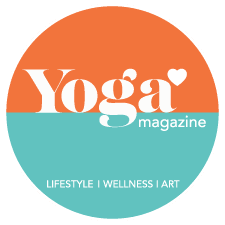My Covid Body
TRENDING
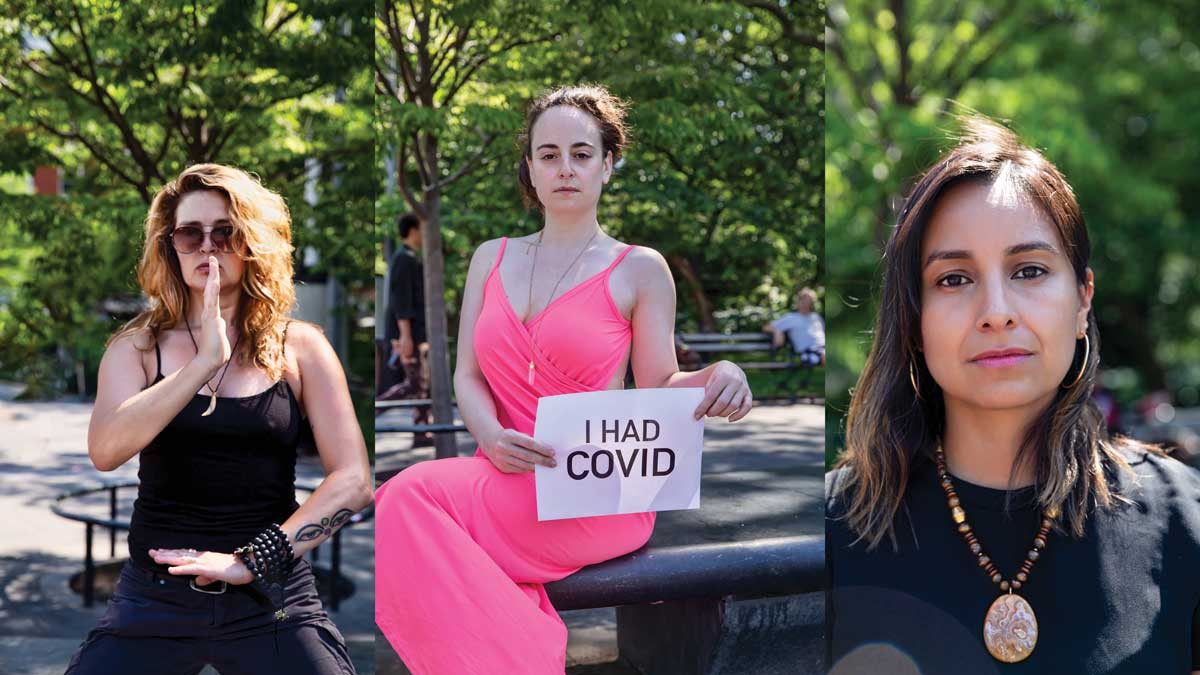
While most people generally think about their yoga teachers as healthy people, we quickly learned that COVID-19 did not care if you were young or old, healthy or not, COVID came for anyone. We reached out to our community of yoga teachers to share their stories with us.
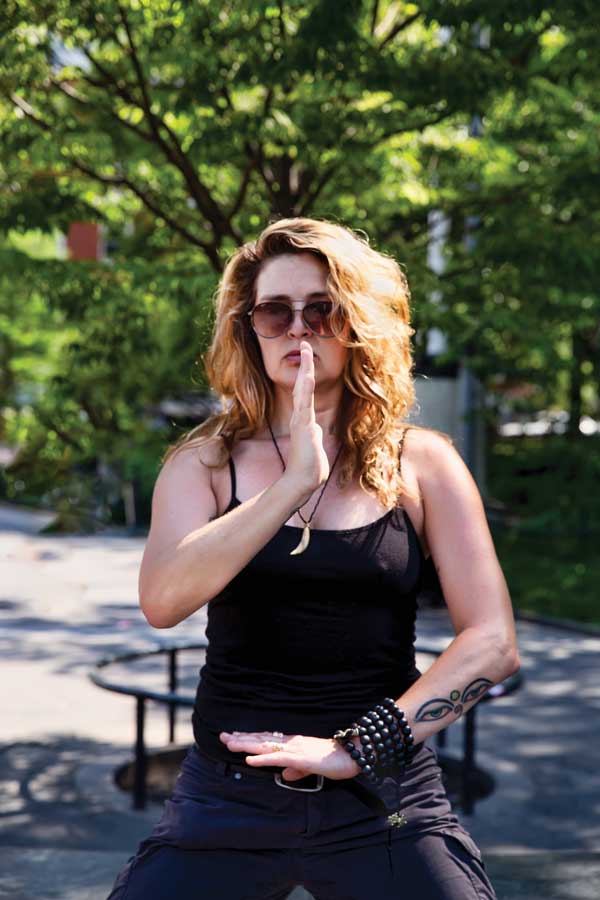
Name: Gina de la Chesnaye
Age: 50
Where do you live: Brooklyn, NY
When did you get COVID-19: March 2020 and March 2021
Describe how the experience felt in your physical body:
The first time I contracted COVID in March 2020, I didn’t realize that my first symptom was related until it was listed in the news. Essentially, I experienced awful diarrhea. This was followed by profuse sweating, headaches, sore throat and that awful “itchy” feeling one
has when a virus is in the body. Intense physical aches and pain, plus weeks long lethargy followed. Occasional chest tightness came and went, but luckily, I never had problems breathing or high fevers. I attribute the daily breathwork practice I have to helping keep my lungs clear and aiding with anxiety. I did notice that my symptoms were worse at night,
and I could literally feel when the virus was dying. For a week or so, I felt as though I had the carcass of it still moving through me. I developed high blood pressure, which I never had before and utilized hibiscus tea and cardio to bring it back down over the following months. The second time I contracted it, I lost smell and taste, and experienced intense body aches that again, were worse at night. Smell and taste returned after a week or so, but I am still working with lethargy and pain in the body. It was fascinating to track the virus as it moved through me. I literally felt like it was learning me and I, it. As I watched the virus tear through the country and across the world, I realized it was learning Us.
Describe the emotional/psychological experience:
It was frankly terrifying in the beginning. No one had a clear understanding of
what it was and the fear that was circulating in NYC was palpable. This was heightened by the non-stop ambulance sirens and the inability to see people’s faces. We were suddenly afraid of each other. Anyone could be a threat or if we had the virus—we were the threat. It
became clear to me, as well, that any unresolved or unmetabolized trauma in the body came rearing back. Anxiety and depression increased in nearly everyone; I experienced both. My heart would race, monkey mind increased, and mornings were filled with dread. I am fortunate that I was able to parse out the experience of my nervous system with knowledge and use my skills, but it was not easy. There was also intense grief. So many had lost their lives, including people I worked with and family members. The collective grief of this as a country is something that we must begin to address.
As a yoga teacher, how did having COVID-19 impact you?
My first thought was “This is why we practice.” Again and again, my practice sustained me. I was able to come to my body and my conscious connection to it to heal and gain wisdom, in deeply profound ways and not to just work with my shit but to step back, witness
and process the dysregulation that was occurring locally and globally. Not being able to share practice with people in person was a loss. That connection and co-regulation are so necessary to us as physical beings. However, I was able to share practice online with people across the country and different parts of the world. I offered classes and workshops through various online platforms. While we were separated physically, we were still able to connect in ways I hadn’t thought possible. For years, people had recommended I offer classes online, and I thought that was just weird. Now I see how remarkable and beautiful it can be. We can connect over vast distances. The path has no boundaries.
What surprised you the most about your COVID-19 experience?
Covid was a mirror. Someone I was in a workshop with commented that the pandemic very clearly showed us what our life choices were and how they led us to exactly that precise moment, both individually and collectively. Typically, I travel two to three times a year to share skills and practice in East Africa through my organization, The Nachan Project. Being home and unable to travel made me realize that part of the reason I enjoyed traveling so much was because being home was sometimes painful. My home, while a beautiful home, carried so many memories of a failed marriage and trauma that I neglected to tend to it in a mindful way. It’s not an easy thing to observe in oneself, but if we are in the practice of genuinely paying attention to our habits — both the positive and negative — that is what we must do. And then, utilize our practice to move forward with compassionate awareness. And, yes, not just metaphorically pull the weeds out and declutter, but literally
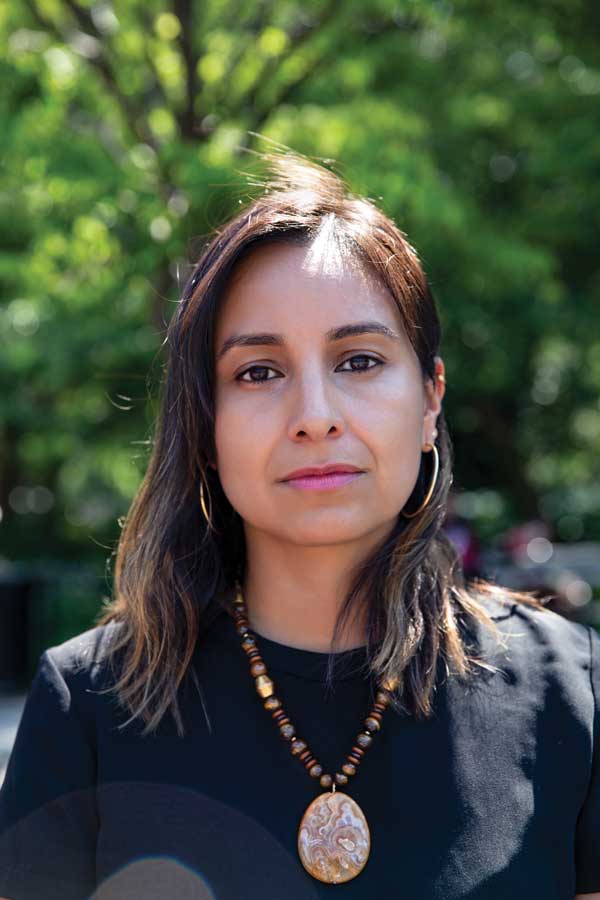
Name: Ingrid Baquero
Age: 39
Where do you live: Astoria, NY
When did you get COVID-19:
November 3rd, 2020. I remember clearly as it was during the elections, and I wanted to celebrate sooo bad the weekend of November 7th but couldn’t leave my house. I used up whatever energy I had to bang those pots out of my window.
Describe what the experience felt like in your body:
My first symptom was feeling tired. A couple of days later, I had a fever, and said “oh no, how?” Immediately, I went to City MD and took the test, and received the call minutes later that I tested positive. The fever continued for an additional day, followed by loss of smell, taste, and severe fatigue, which lasted beyond a month.
Describe the emotional/psychological experience:
Honestly, I was disappointed in myself, I didn’t know how I caught it, as I had been extremely careful. I’m also a very active person — I run, bike, dance, do yoga, but my body had not felt this extreme exhaustion before. I couldn’t work out for the life of me, which affected my mood. Instead of fully resting, I tried to push through the exhaustion as I continued to work my day job, which made it worse. I went into a post-COVID depression and burnout after the two-week quarantine.
As a yoga teacher, how did having COVID-19 impact you?
I looked forward to teaching my Saturday class during this pandemic because it gave
me life. I saved my energy to host a slow flow yoga class virtually the second week
of being sick. My breathing, though, was off — I had to catch my breath, which wasn’t ever an
issue before.
What surprised you the most about your COVID-19 experience?
How sneaky COVID is, and how even a healthy, active individual can get sick. Also, how important it is to rest and take care of yourself. The world can wait until you get better. The world needs you healthy.
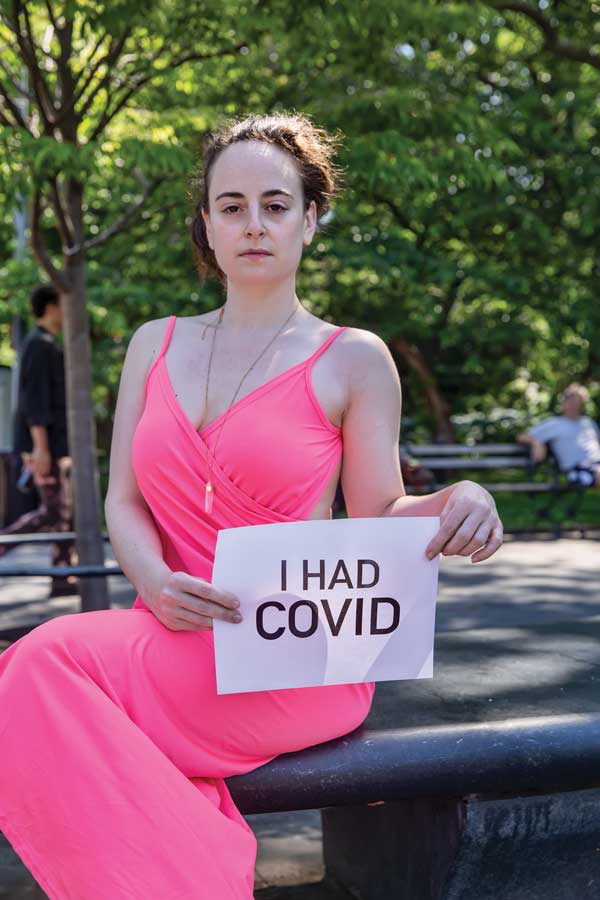
Name: Megan Fliegelman
Age: 34
Where do you live : New York, NY
When did you get COVID-19:
March 2021
Describe how the experience felt in your physical body:
My disease expression had a number of distinct phases. My acute disease was
not extreme, bad allergy symptoms, some mild chest pain, and a headache
ruled the first two weeks. As the acute viral symptoms began to wane, I noted a profound shift in my fascia & energetic systems, gatē completely changed. That pulsation of energy I had gotten to know so well became a stranger. As this happened, it became too hard to consume solid foods as my heart and head declined (I lost 25 pounds, which often is complimented). In June, I had a preliminary diagnosis of Vasospasms of the Coronary Arteries that were setting off arrhythmias. We are trying to understand and control changes in my EEG and get a handle on the weight loss and other organ damage. Hopefully this is all temporary, but we just do not know how COVID-19 affects the body or what the future holds. Science is slower than disease. I have dealt with major health events before, but none of these things were a part of my life before COVID-19.
Describe the emotional/psychological experience:
The entire medical system is completely strained. The burden of COVID-19 on the medical system and infrastructure exposed how ill prepared we are to manage emerging pathogens as a society. A year and a half into the pandemic burnout is a profound issue that is
completely pervasive in everything that touches most of society, but specifically medicine. This is compounded by the complexities of emerging pathologies and many long haulers without quantifiable findings. I am not “lucky” enough to have quantifiable findings so my doctors are taking me seriously now. Early in my disease expression, I was told everything was anxiety. Only after things further declined in a quantifiable way was I able to find any appropriate, respectful care. It is trauma pushing trauma and in this dynamic everyone loses. This is system-wide problem. I was in love with my work before I had COVID-19, I was not teaching as much, but I was running a large organization and putting the principles of yoga into practice in a corporate setting; it was like art, and I loved it. Unfortunately, I was not able to continue working. I can not wait to take on the next project and put the principles to work — creating systems that build norms that are in line with my soul.
As a yoga teacher, how did having COVID-19 impact you?
In this process, I have learned so much and been able to connect the dots of teachings and lessons that have been in me but not fully integrated. At this stage in my disease expression, I may not be processing a lot of external information, but internally, there is a whole new level
of understanding opening for me. There is a richness and vibrancy that is now behind the stick figures that were the techniques I so well knew. In the loss there is a new, in that there is always hope in the grief. With this experience under my belt and hopefully in the rearview mirror, I will be able to offer richer alternatives and modifications. I am refining understandings
of techniques, which always opens another way or wording to accessing them. As a teacher, I will be better prepared to support the fluctuations of the lives of my students when I get back to teaching. Oh, and how sweet it will be to be back teaching…
What surprised you the most about your COVID-19 experience?
What surprised me the most was how there were very distinct cycles in how society reacted to the changing reality of life in a global pandemic. The incredible interplay of fear, gratitude, and a pathological need to know, instead of a need to keep building a base for understanding. These dynamics play out on repeat in many ways, and there is a great deal of momentum to their flow. The power dynamics of conflict never happen in a vacuum but always include the vacillate of rajas and tamas around, but rarely settling in on sattva. There were so many points in this pandemic period where we could find that pause and plateau, only to be knocked into a different spiral of conflict. There are statements of the pandemic being over. The pandemic is not over. The mitigations procedures are being rolled back now that specific thresholds of vaccination are being met. That leaves out a lot of society; that leaves out all of those who are unable to access the vaccine, and all of those who will not have an effective immune response to the vaccine. This leaves entire subsets of society behind and amounts momentum behind power dynamics of inequality in society.
